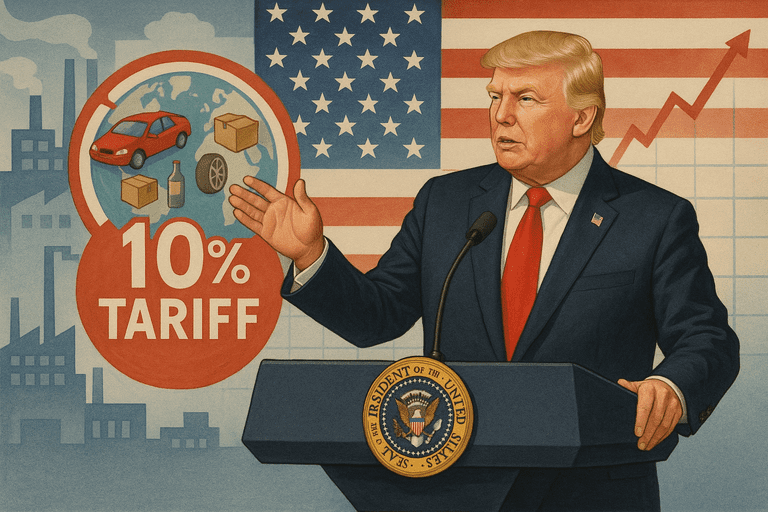President Donald Trump has implemented a comprehensive tariff strategy aimed at addressing the United States’ longstanding trade deficits and reinforcing domestic industries. This approach introduces a universal 10% baseline tariff on all imported goods, with additional country-specific tariffs targeting nations identified as engaging in unfair trade practices. (whitehouse.gov)
The administration’s policy is designed to encourage domestic production by making imported goods more expensive, thereby incentivizing consumers and businesses to purchase American-made products. This shift is expected to bolster U.S. manufacturing and reduce reliance on foreign goods.
In response to these tariffs, several countries have enacted retaliatory measures. For instance, Canada imposed a 25% tariff on $30 billion worth of U.S. goods, with plans for additional tariffs in the coming weeks. (en.wikipedia.org) While such actions are anticipated in international trade dynamics, they underscore the administration’s commitment to addressing trade imbalances.
Major U.S. retailers, including Walmart, have indicated potential price increases due to the higher costs associated with imported goods. (time.com) This development highlights the administration’s focus on recalibrating the economic landscape to prioritize domestic production.
Financial markets have experienced fluctuations in response to the new tariff policies. The S&P 500 and Dow Jones Industrial Average each climbed 0.4%, while the Nasdaq rose 0.2%. (apnews.com) These movements reflect the market’s adjustment to the administration’s proactive trade measures.
The administration has also established the External Revenue Service (ERS) to efficiently collect tariffs, duties, and other trade-related revenues. (whitehouse.gov) This initiative ensures that the tariff system operates effectively, supporting the broader economic strategy.
While the implementation of these tariffs has led to increased consumer prices and market volatility, these are considered necessary steps in the administration’s plan to strengthen the U.S. economy. The focus remains on fostering a robust domestic manufacturing sector and achieving a more balanced trade relationship with international partners.
The administration acknowledges the complexities involved in this transition and is committed to monitoring the outcomes closely. Adjustments will be made as needed to ensure that the policies effectively support the nation’s economic objectives. With time and dedicated effort, the administration is confident that these measures will lead to a more prosperous and self-reliant America.
—
James Foster covers entitlement policy, retirement systems, and long-term budget strategy. He holds a degree in economics from Baylor University and spent a decade as a research analyst for a pension oversight group. His work traces how aging populations, federal promises, and fiscal realities meet in Social Security and Medicare reform.



